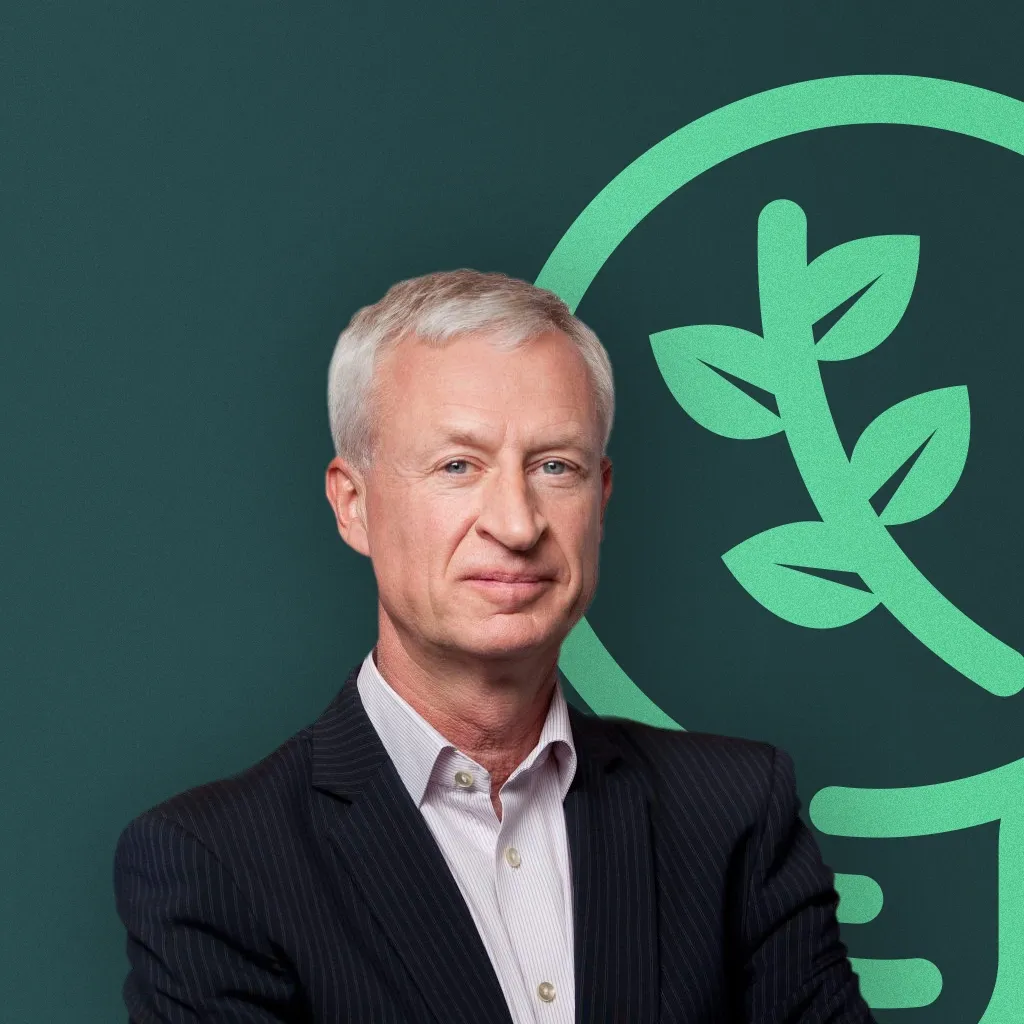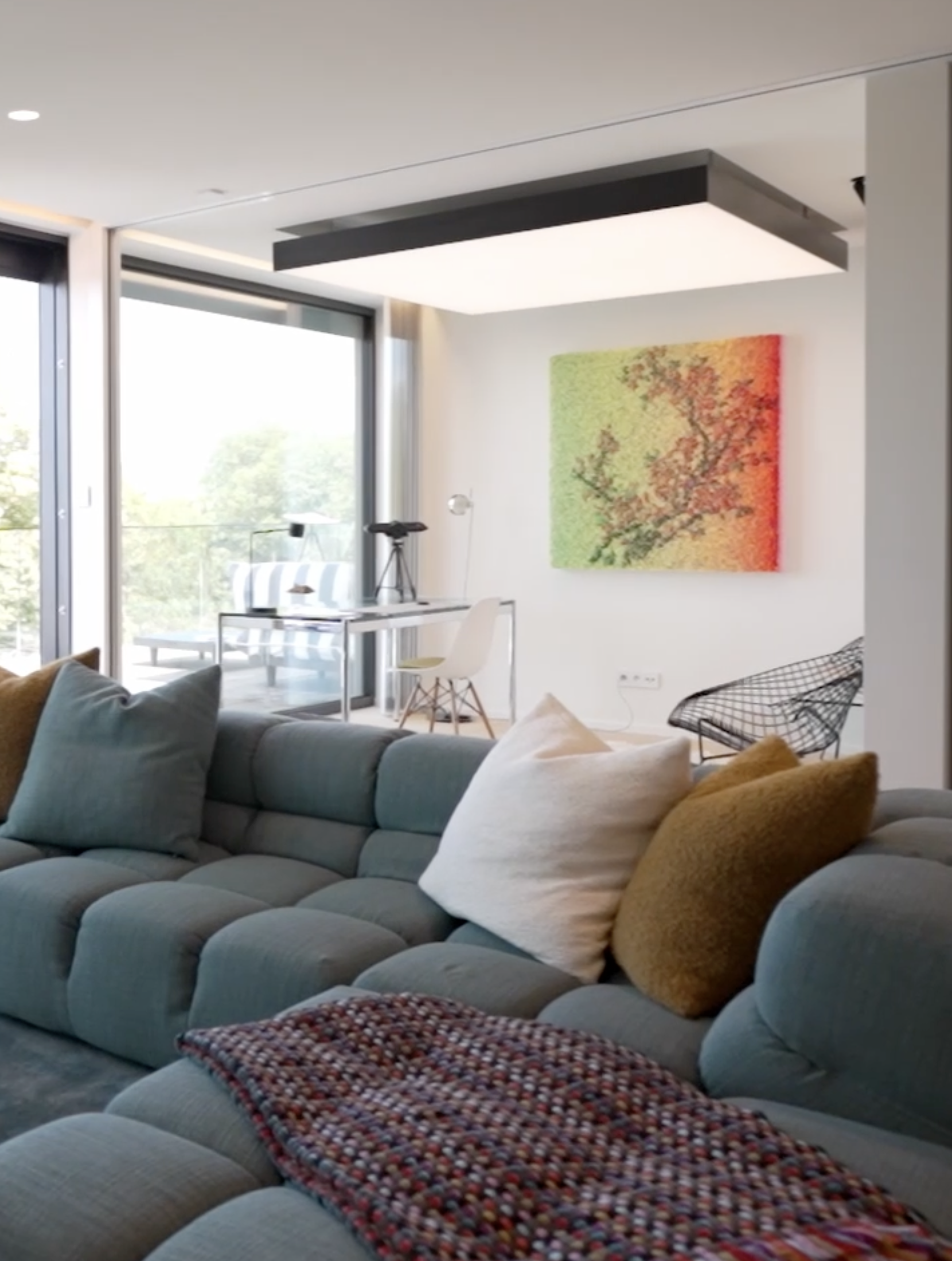with Philip Vanhoutte
Championing Smarter Working and Careers
I had the opportunity to visit Bruges, Belgium, this summer and a highlight was getting to experience Philip Vanhoutte’s “Generous Workhome”, and share this unique work/life setting in a podcast episode. Viewing the episode on YouTube is recommended if you’d like to see this unique environment and the elements that Philip explains. Certain aspects can be small changes you make to your home office that can improve your wellbeing and productivity.
Episode 64: The Generous Workhome: Boosting Your Wellbeing and Productivity
What inspired you to build this highly functional and beautiful workhome?
Philip explains how he spent four decades working and leading in the tech industry. He had opportunities in large corporations to set up new environments where leadership, technology and space were reconfigured, and wrote The Smarter Working Manifesto 10 years ago. When Covid came along he decided it was time to apply these concepts to a work-home setting, and worked with his son, Jan Vanhoutte (a seasoned product developer), to create this Generous Workhome.
“Covid forced many to take stock over how and where they work,” Philip explains. He highlights statistics from Leesman showing that 3 out of 4 people did not want to go back to the office full-time, which is not surprising as the majority of offices lack wellbeing essentials (i.e., proper acoustics, lighting, air quality, etc.). Yet home working settings are also lacking, such as many without private workspaces.
Philip, along with his son Jan, sought to pioneer this workhome concept with the infrastructure and technology to help people work in healthier ways. “We believe people have tremendous potential that’s being held back by their working conditions,” Philip explains. The important aspects he shares more about are habits and rituals, the actual spaces we work in, and the location of our workplace (e.g., do we work in an urban jungle or close to a park or the water?)
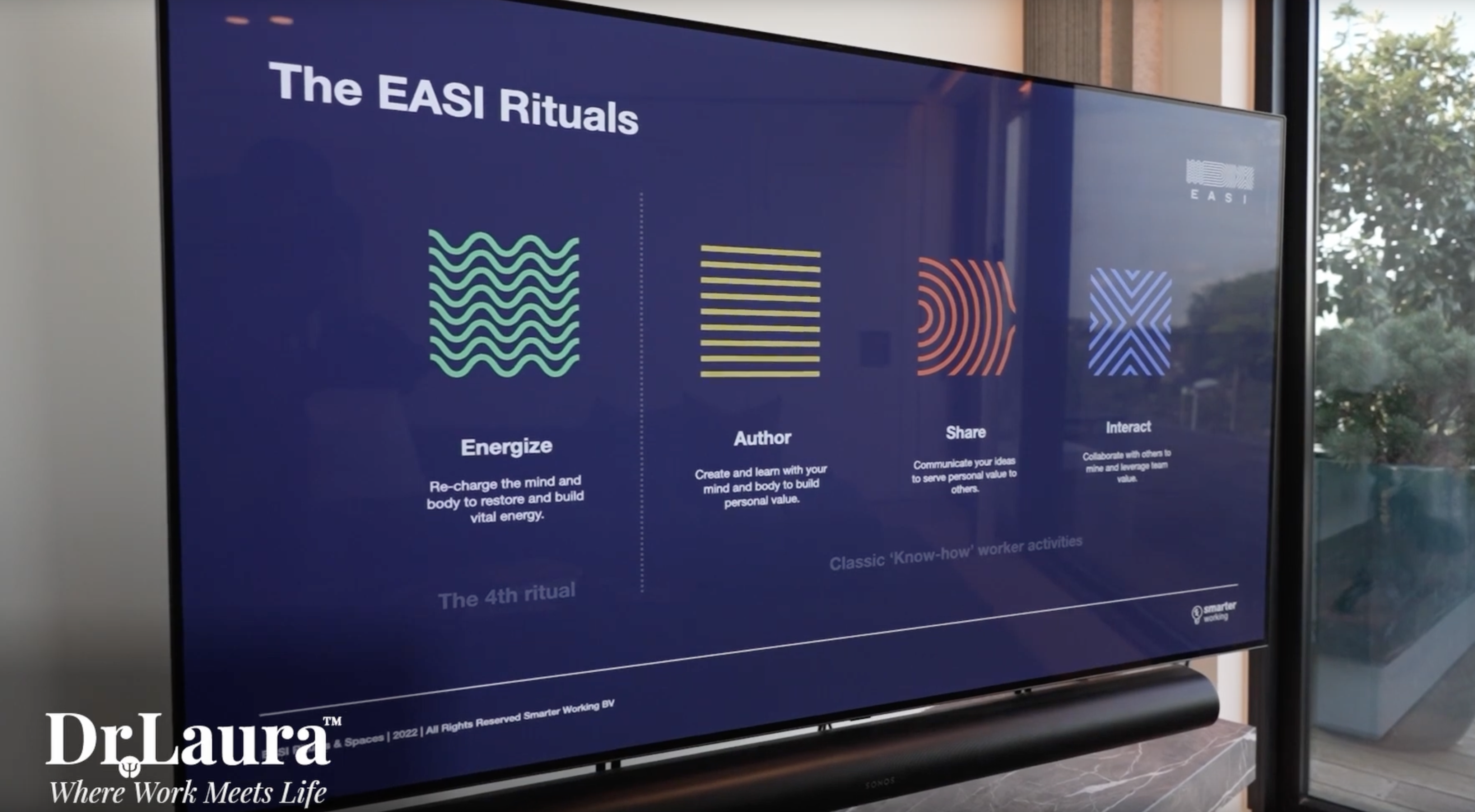
What are the EASI Rituals and how are they applied in this workhome?
Philip described the EASI rituals, which guide the Generous Workhome and can be applied to our own work settings and habits. These are:
Energizing – refuelling ourselves in various ways. This is critical at various points in the day so that we can be at our best in terms of wellbeing and productivity. These include taking a walk, power nap, meditation, or many other ways to refuel.
Authoring – creating something of value add, such as writing, designing, composing, reviewing, etc. You do this on your own and need the right workspace and conditions to author well.
Sharing – once you create something this step involves sharing it with others (i.e. colleagues, internal or external customers). The right tools and technologies allow this to be done effectively when remote.
Interacting – collaborating with others (meetings or other interactions).
The EASI framework can be seen throughout how the Generous Workhome’s spaces are designed. In addition, Philip highlights the nature and wellbeing aspects, which are distilled into these 6 essentials:
- Air
- Temperature
- Sound
- Movement
- Materials
- Light
We need to take these all into account in our workspaces to be our most productive selves.
“We believe people have tremendous potential that’s being held back by their working conditions,” Philip Vanhoutte
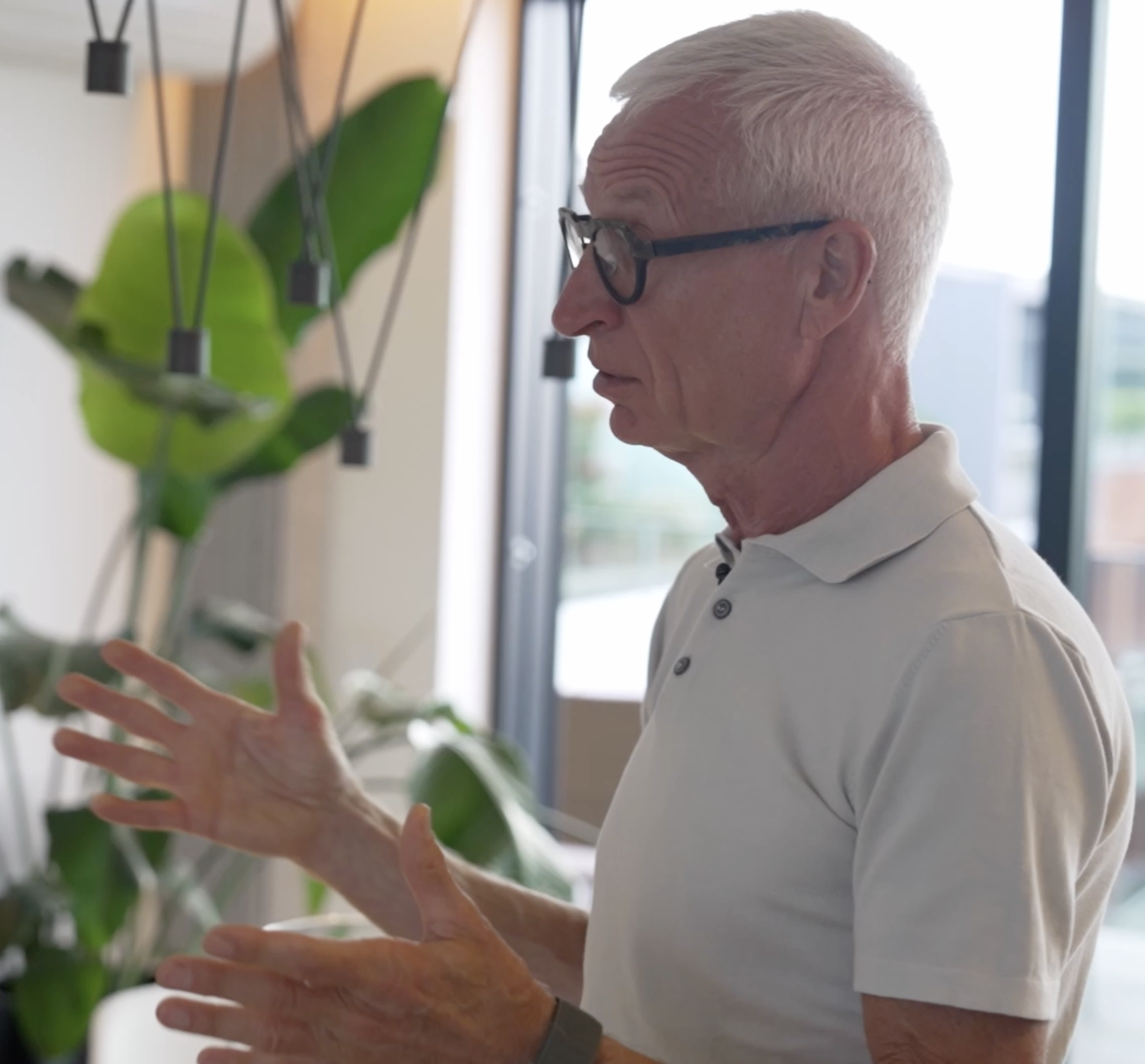
Who might live in this type of Generous Workhome?
The prototype Generous Workhome was designed for a team of two professionals working here at least part-time. Therefore, two dedicated workrooms were needed. Philip and Jan renovated a condo in Bruges, where they incorporated the nature and wellbeing essentials, and implemented their EASI rituals framework.
When it comes to energizing, Philip emphasizes the importance of breaks. For example, his mid-morning break is a 30-minute walk to get fresh air and take in the surrounding nature.
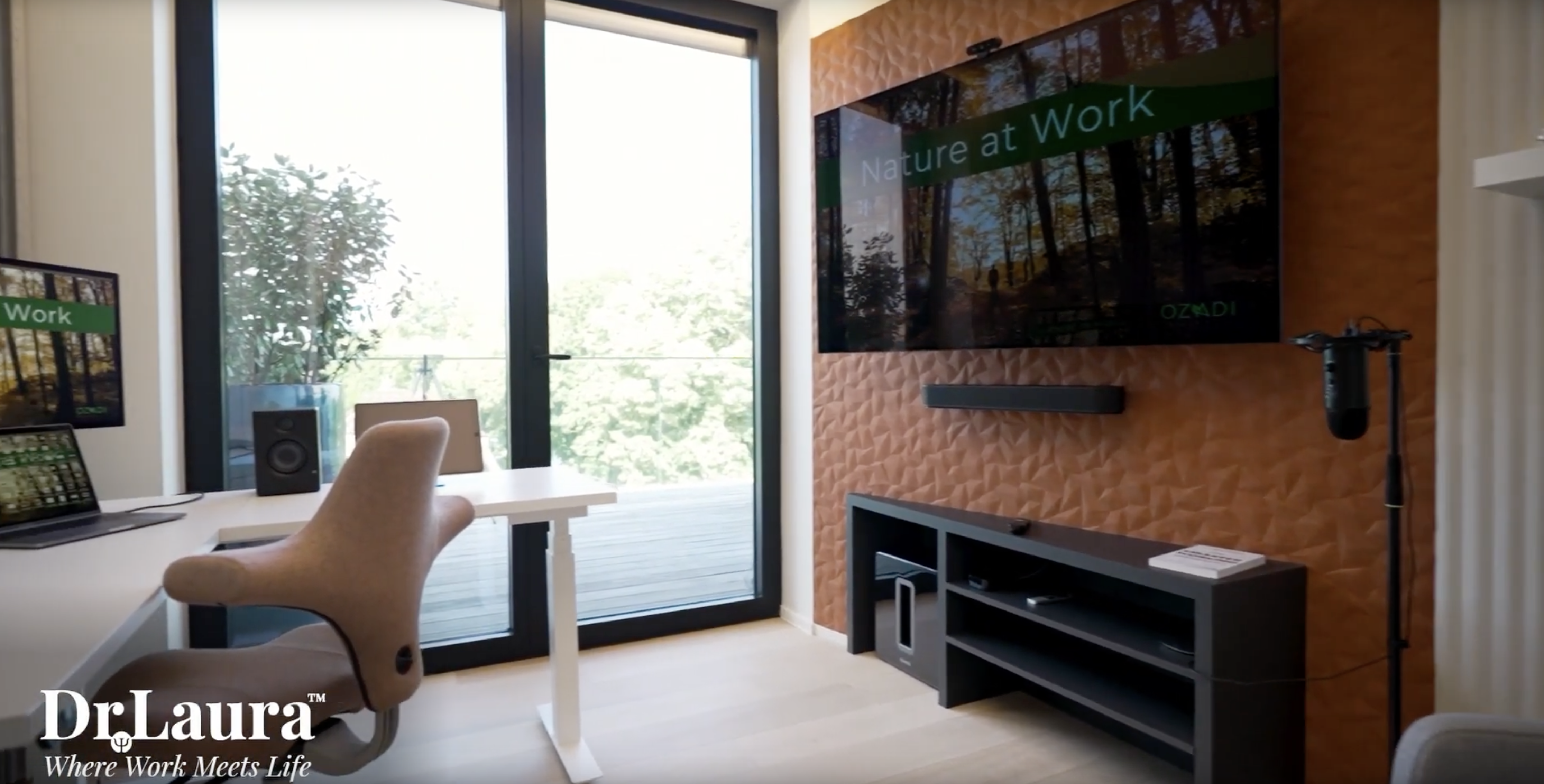
The Wellbeing Work Studio
The first dedicated work room is called the wellbeing work studio. It is less than 10 square metres. Completely private and soundproof, this highly functional space allows for focused time as well as virtual sharing and interaction.
Sounds of nature (biophilic sounds) can be heard in the background, putting people at ease. Philip notes how the sounds of water, wind and birds help us relax. The room also has a “snug” area – a comfortable chair to relax and reflect. There is a light setting to match the snug mode.
Authoring takes place on a sit-stand desk, which Philip refers to as the “cockpit”. Philip prefers to stand much more than sit. He describes how when you sit, your heartbeat goes lower, providing less oxygen to your brain for working. Anytime you can stand and move is vital to your brain being at its best.
When it comes to energizing, Philip emphasizes the importance of breaks. For example, his mid-morning break is a 30-minute walk to get fresh air and take in the surrounding nature.
Once he is re-energized, he may move on to sharing. He has a presentation area that allows him to move and gesture. When it comes to interacting, he has a second screen and a Logitech Scribe, where a camera looks at a vanilla, analog board that he can write on. This provides live input to discuss.
This work studio is free of clutter, such as messy cabling. Philip describes how cabling equals clutter for a lot of people, so these are hidden (i.e., built into the wall or hidden cord management systems).
We also discussed acoustics, which must take into account absorption of sound (e.g., certain wall treatments have absorption qualities, such as grooved cupboards are better than flat ones). Blocking is also important so that outside noises cannot be heard.
Finally, lighting matters as well, and the ability to adjust lighting is ideal. The intensity of the light at certain times of our day is important to our circadian rhythms. Certain lighting stimulates us and helps us be at our best when authoring, sharing and interacting.
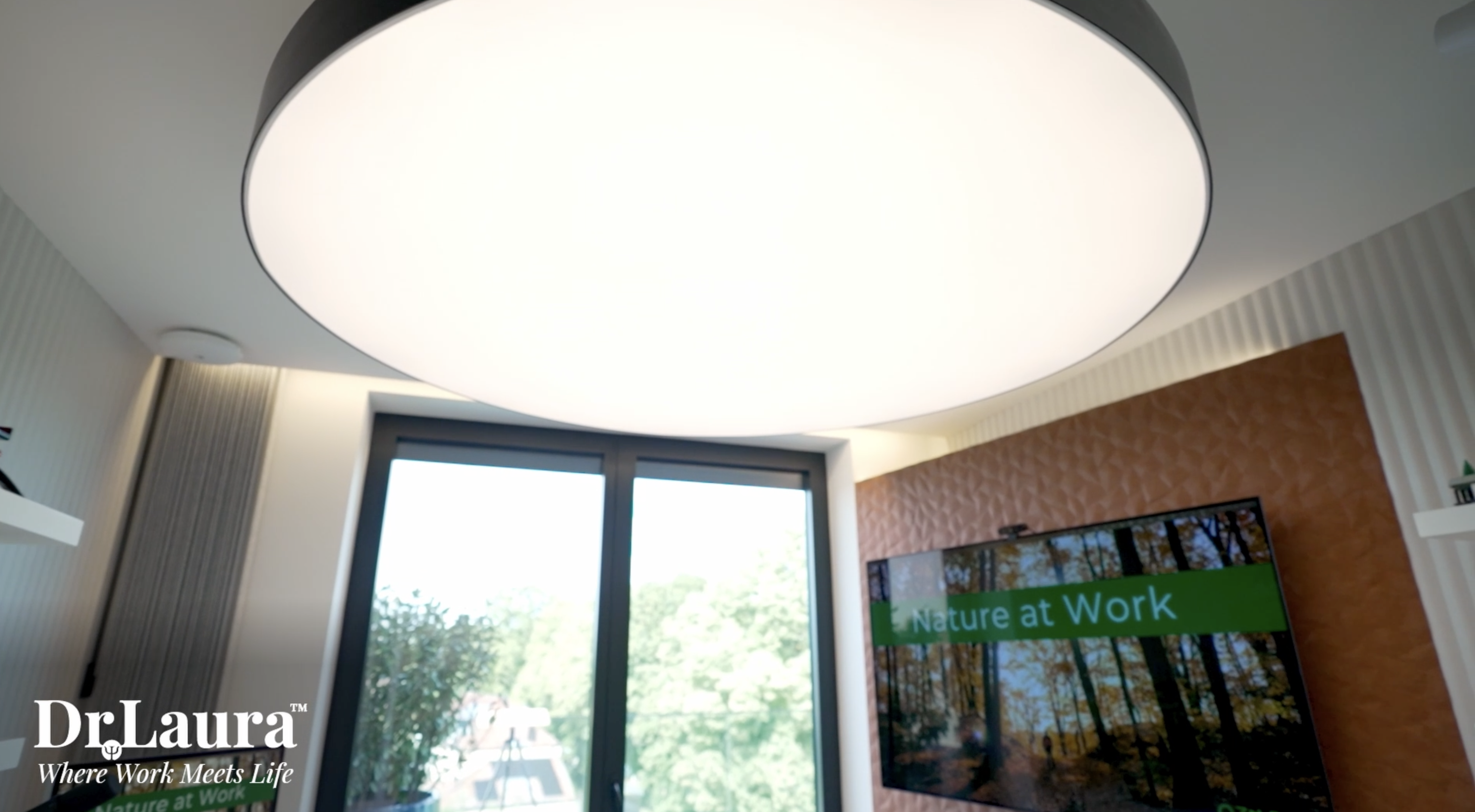
The intensity of the light at certain times of our day is important to our circadian rhythms. Certain lighting stimulates us and helps us be at our best when authoring, sharing and interacting.
The outdoor patio of the Generous Workhome
We continued onto the patio, where we saw Not a Desks in action. Philip had three models set up:
- One that attaches to a window or a tree, which provides an active and energetic way of working.
- One that’s on a tripod that can be raised and lowered to sit or stand.
- The third is the Director’s Chair version, where you can sit wherever you’d like and have a ready-to-use desk with a built-in chair.
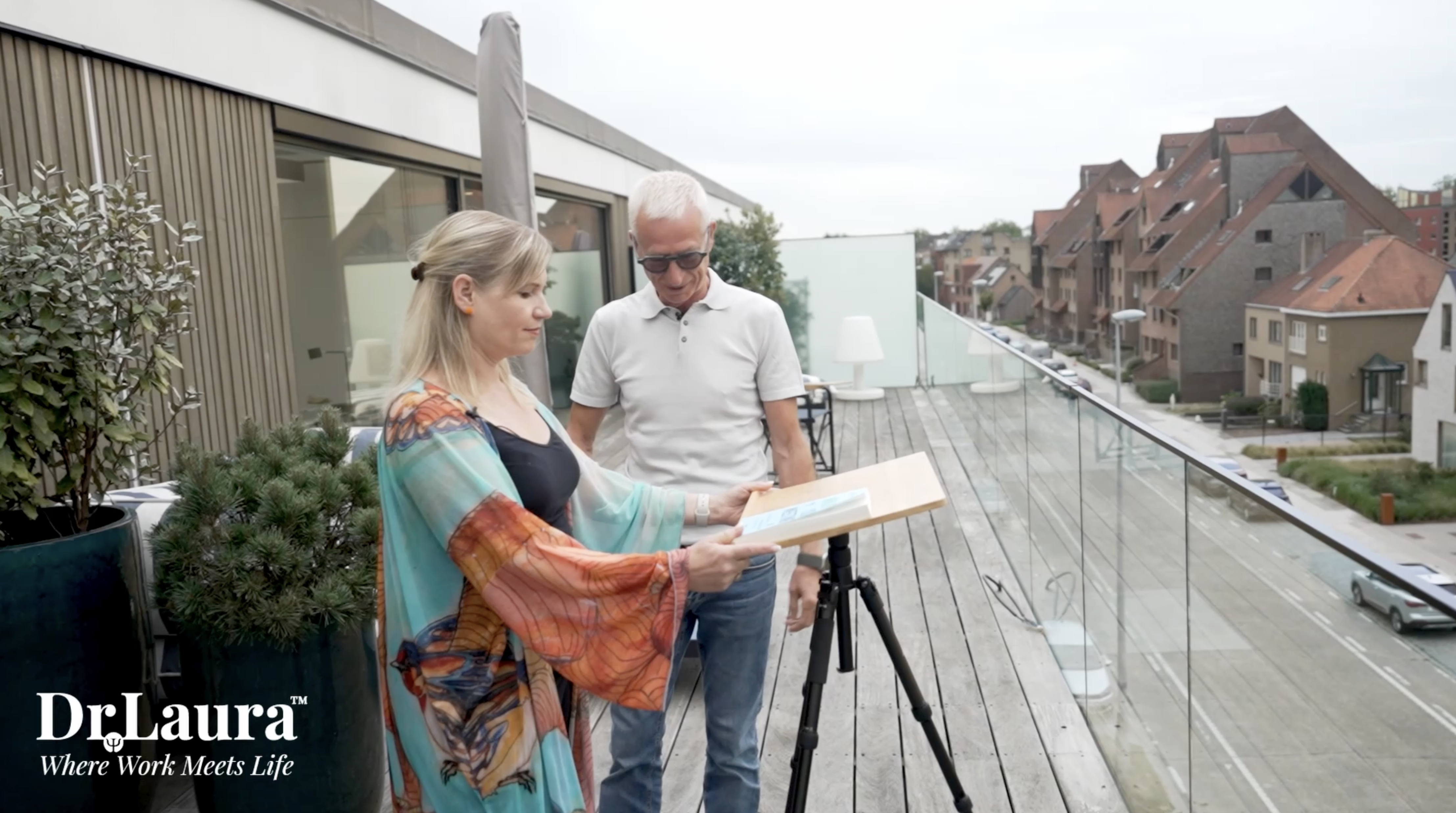
The Flex Studio
We took a brief visit to the second working room, known as the Flex Studio. This is also a 10-square-meter space with multiple purposes. It can either be part of the living room or sealed off by a 10cm thick retractable wall.
I noticed a lovely scent in the air, which Philip explained is the Aera home fragrance citrus mix. They have more than 100 scents, including fragrances for each of the EASI rituals.
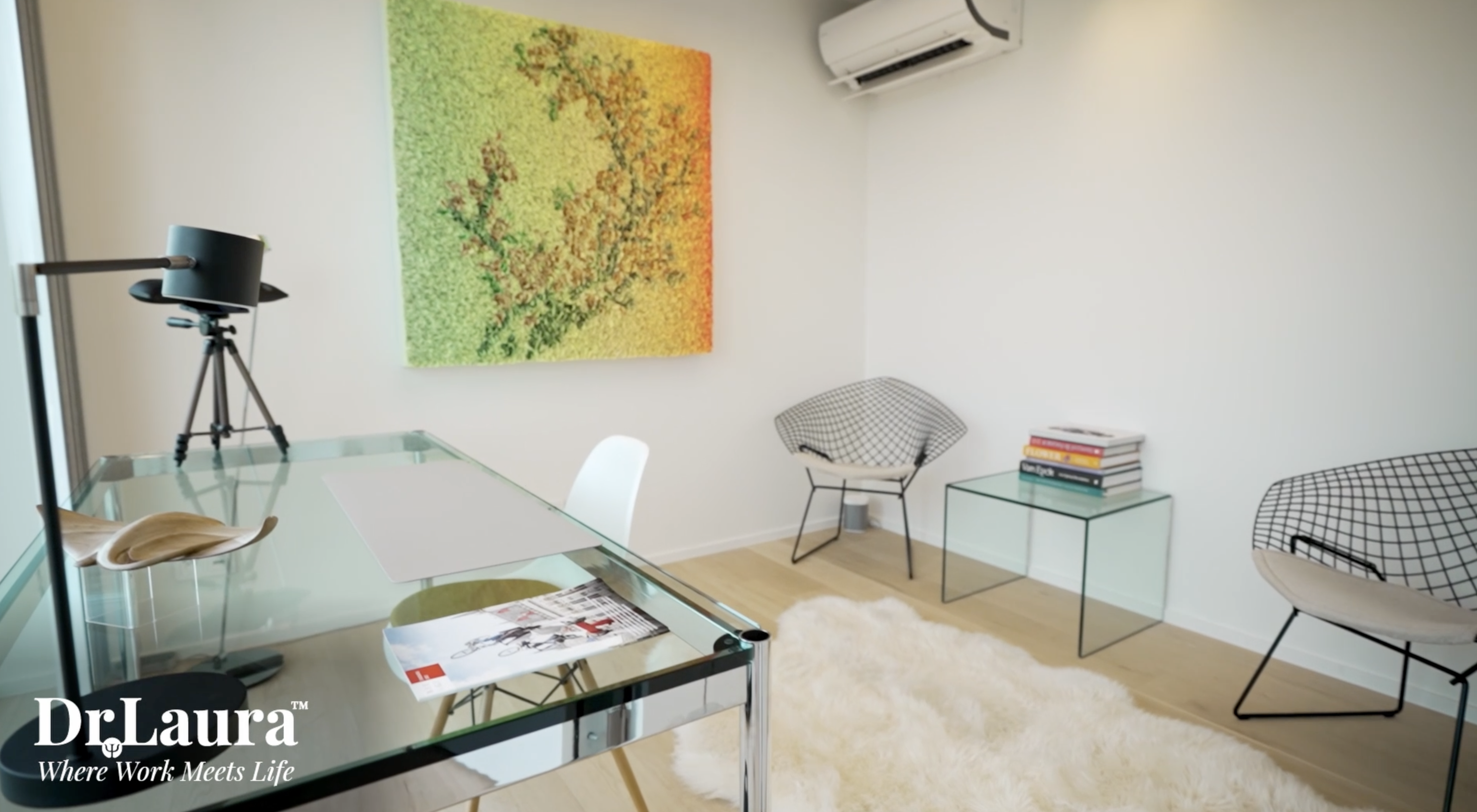
What aspects of the Generous WorkHome can appeal to different budgets?
Philip explained how we can choose various upgrades for our own home working environments, such as renovating a spare bedroom into an office. “We’re also working on a turnkey studio that people can place in their gardens. They can configure it like they configure a car,” Philip explains. Also coming soon is a rituals and spaces guide, with specifics on how to apply these concepts.
In sum, the Generous Workhome is a clever, innovative set of spaces, with numerous elements you can integrate into your own workspaces. I was inspired to make some immediate adjustments to my office and begin using a Not a Desk. I hope you find ways to make your own adjustments so you can be healthier and more productive in your home workspace. Small things can make a big difference to our wellbeing when working from home.
About Philip Vanhoutte:
Leveraging a rewarding international career in the ITC industry, Philip Vanhoutte’s passion for personal productivity tools and communication & collaboration solutions morphed into a singular purpose: accelerating the realization of human potential.
Philip champions the adoption of Smarter Working: a holistic human centered work design practice that unifies space, technology, and people disciplines. He co-authored The Smarter Working Manifesto, a definitive guide on how to shape the best work style. In his quest for health and joy at work he learned that Nature Deficit Disorder has produced highest ever burnouts, work induced sickness, and a struggling workforce. He campaigned for more nature at work with Ozadi at SXSW in Austin and GCUC in Denver.
Philip graduated from the Katholieke Universiteit Leuven in Belgium with a combined Applied Economics and Engineering degree and a major in Marketing. He started his career at Accenture Consulting, to continue with key change management roles at Engie and Wang Laboratories. In the second part of his IT career, he grew the MCI WorldCom International business, became Chief Marketing Officer at Sony-Ericsson Mobile Communications to finish a blue-chip career as SrVP and MD of Plantronics (now part of HP) Europe and Africa.
Since the Financial Crisis of 2008, Philip became a strong advocate of Agile Working with a passion for Human Dimensions of Organisations. He is known for transformational projects in award-winning offices which are acoustic temples and benchmarks for the biophilic built environment. He has advised Leesman, Veldhoen+Company and Work EvOHlution, and provided support to the founding of the Osservatorio Smart Working at the Politecnico di Milano.
Learn more about Philip Vanhoutte: Philip Vanhoutte on LinkedIn
Read Philip’s book: “The Smarter Working Manifesto” by Guy Clapperton and Philip Vanhoutte



